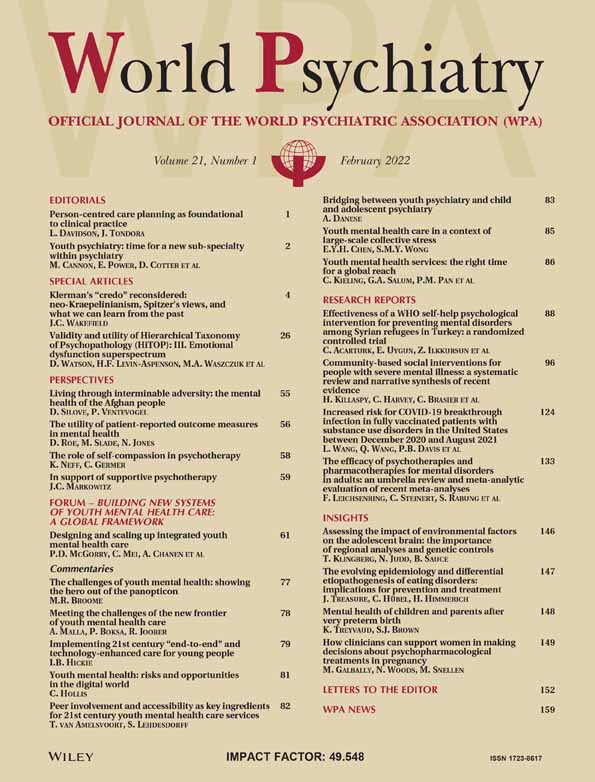CopeNYP: a brief remote psychological intervention reduces health care workers’ depression and anxiety symptoms during COVID-19 pandemic
This study was supported by the US National Institute of Mental Health (grant no. K23 MH123864).
The COVID-19 pandemic has significantly impacted the psychological well-being of health care workers globally1. Meta-analyses indicate that approximately 20-30% of health care workers experience depression, anxiety or symptoms of post-traumatic stress disorder2, 3. There are few data about the efficacy of tailored interventions4.
We designed and implemented CopeNYP, an in-house, four-session, telehealth-delivered intervention. Our model incorporated brief skills-focused techniques from evidence-based psychotherapies (e.g., problem-solving therapy, behavioral activation, and supportive therapy), tailored to health care workers’ specific needs and circumstances.
The first session focused on assessment of mental health needs and available social support, formulation of short-term treatment goals, de-stigmatization of mental health difficulties, and psychoeducation about symptoms of anxiety and depression and exposure to trauma and stress. In each subsequent session, clinicians focused on behavioral activation and stress reduction (i.e., engagement in pleasurable activities, relaxation, mindfulness skills), validation of emotional responses, and problem-solving techniques (i.e., resolving interpersonal conflicts, reducing social isolation, coping with loss and grief). The last session included reinforcement of skills, relapse prevention, and follow-up plans if needed.
CopeNYP was developed and launched at Weill Cornell Medicine's Psychiatry Department. We assessed the program's efficacy in reducing depression and anxiety symptoms among health care workers.
Interventions were delivered by 67 clinicians (including 41 clinical psychologists, three social workers or pastoral counselors, four psychiatrists, four psychology pre-doctoral interns, and 15 psychology post-doctoral fellows). Clinicians underwent brief training on manualized assessment, triage and skills-based therapeutic techniques and received weekly peer group supervision and on-call supervisory consults from senior clinicians.
CopeNYP was introduced to employees in hospital COVID-19 updates and internal communications. All employees were invited if they were experiencing distress and/or wished to speak with a psychotherapist. No exclusion criteria were implemented. Employees contacted administrators for scheduling via email or phone. The study was approved by Weill Cornell's institutional review board.
Anxiety and depression were assessed during the first and last sessions using the Patient Health Questionnaire-9 (PHQ-9)5 and the Generalized Anxiety Disorder-7 (GAD-7)6. Suicidality was evaluated at intake using the Columbia-Suicide Severity Rating Scale (C-SSRS)7, repeated if needed. The PHQ-48 was administered in sessions 2 and 3 for symptom monitoring.
Employees with severe symptom presentations were referred to longer-term clinical care or emergency services if at imminent risk of harm. If pharmacotherapy was indicated, employees were referred to a psychiatrist for evaluation/treatment and continued to receive CopeNYP sessions until psychiatric treatment started. Employees were referred for additional psychotherapy after the last session as needed.
PHQ-9 and GAD-7 scores were converted to PHQ-4 scores to estimate slopes over all time points using linear mixed-effects regression to account for within-subject correlations (random effects: subject slope and intercept; fixed effect: time). Analyses were conducted with a modified intent-to-treat sample (i.e., patients with at least one visit). Partial eta squared effect size was calculated for the fixed effect of time. We evaluated clinical response rates (i.e., 50% reduction in PHQ-9 or GAD-7) among employees who received four sessions of CopeNYP.
A total of 534 health care workers participated in the program. The institutional review board did not allow reporting their demographic data. The sample included 35.2% nursing staff (N=188), 24.3% patient support staff (N=130), 22.8% administrative support staff (N=122); 13.8% physicians/doctoral level faculty and trainees (N=74), 2.4% maintenance workers (N=13), and 1.3% employees’ family members (seen at the request of an employee receiving services; N=7). Overall, 70% of employees were frontline, employed in-person; 19% worked remotely; 11% did not indicate.
A total of 1,423 sessions were delivered between March 27, 2020 and April 16, 2021, with an average of 25.41±13.31 sessions per week and an average of 2.66±1.28 sessions per employee (141 participants completed just one session; 106 two sessions; 103 three sessions; 166 four sessions; 18 over four sessions). At intake, 45% of employees reported at least moderate anxiety (GAD-7 score: ≥10); 42% reported at least moderate depression (PHQ-9 score: ≥10) and 10% reported suicidal ideation (PHQ-9 item 9 score: ≥1).
The linear mixed effects regression showed significant reduction in symptoms during the intervention for the entire sample (PHQ-4 mean score: 5.65±2.95 at intake, 3.32±2.46 at last session; F3,823=109.23, p<0.001, eta squared = 0.27). Treatment effects were larger among workers who reported clinically significant symptoms at intake (PHQ-4: ≥6), with an average reduction on the PHQ-4 from 8.09±1.78 to 4.36±2.63 (F3,462=139.99, p<0.001, eta squared = 0.46).
These effect sizes remained significant when we controlled for number of hospitalizations and employment format (frontline in person or remote) to account for potential effects of the pandemic on symptoms beyond the intervention (main effects and interaction with time were non-significant). Among participants with both intake and last session rating, 42% exhibited greater than 50% reduction on the GAD-7 (mean change: –4.45, SD=4.22), and 43% showed greater than 50% reduction on the PHQ-9 (mean change: –3.97, SD=4.42).
Thus, we found that a brief, in-house, telehealth-delivered, psychotherapy skills-based intervention significantly reduced symptoms of anxiety and depression among health care workers, the majority of whom were frontline workers, likely exposed to acute and chronic stress due to COVID-19. This is among the first reports of efficacy for such a brief, on-demand psychological intervention tailored to health care workers during the pandemic.
While direct comparison is difficult, the percentage of treatment responders was similar to that observed in brief evidence-based psychotherapies, and greater than reported effects in psychotherapy control conditions9. Limitations of the study include the lack of a control group and the brief follow-up. Nonetheless, our findings suggest that accessible, high-quality, brief interventions can reduce psychological distress among health care workers and may provide a template for other health systems.




